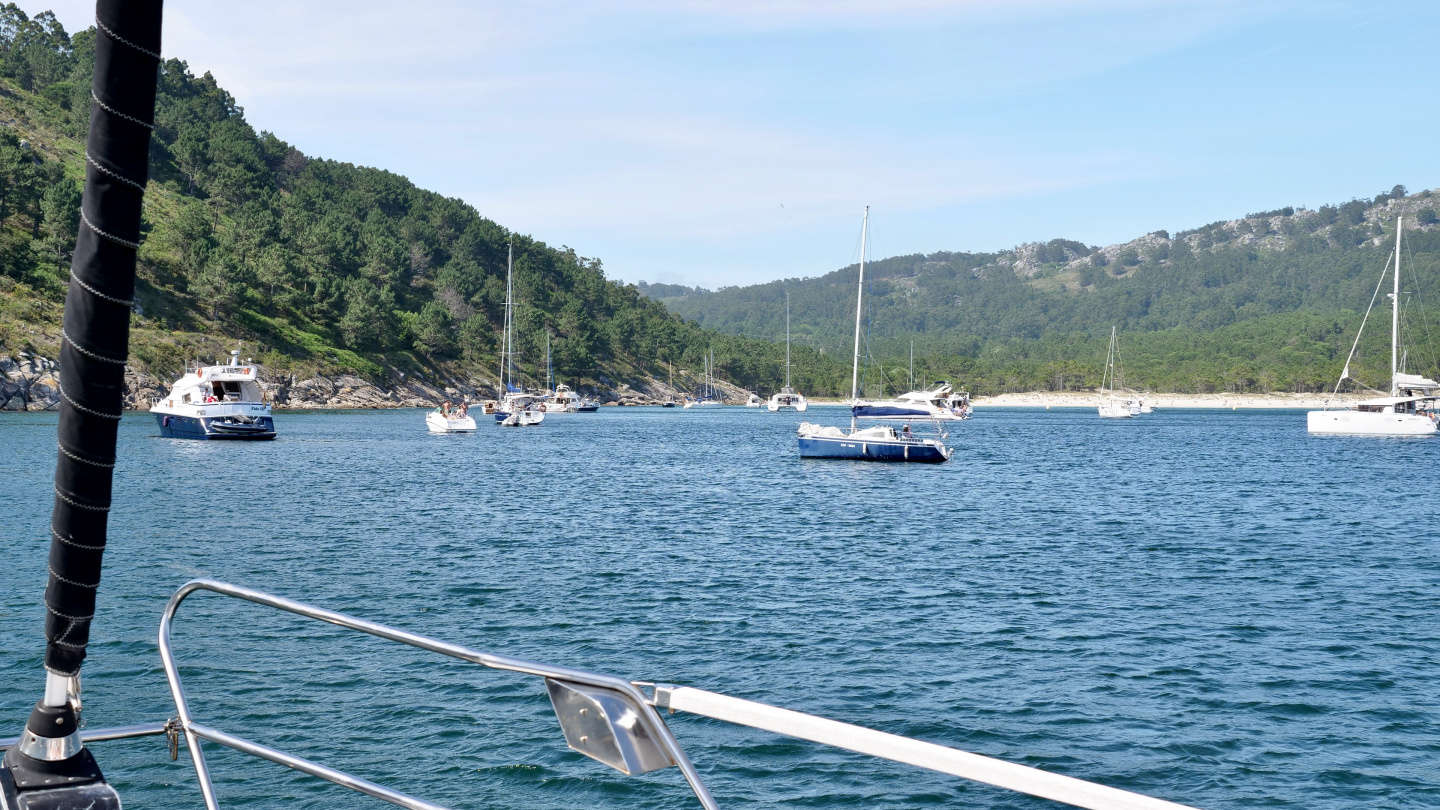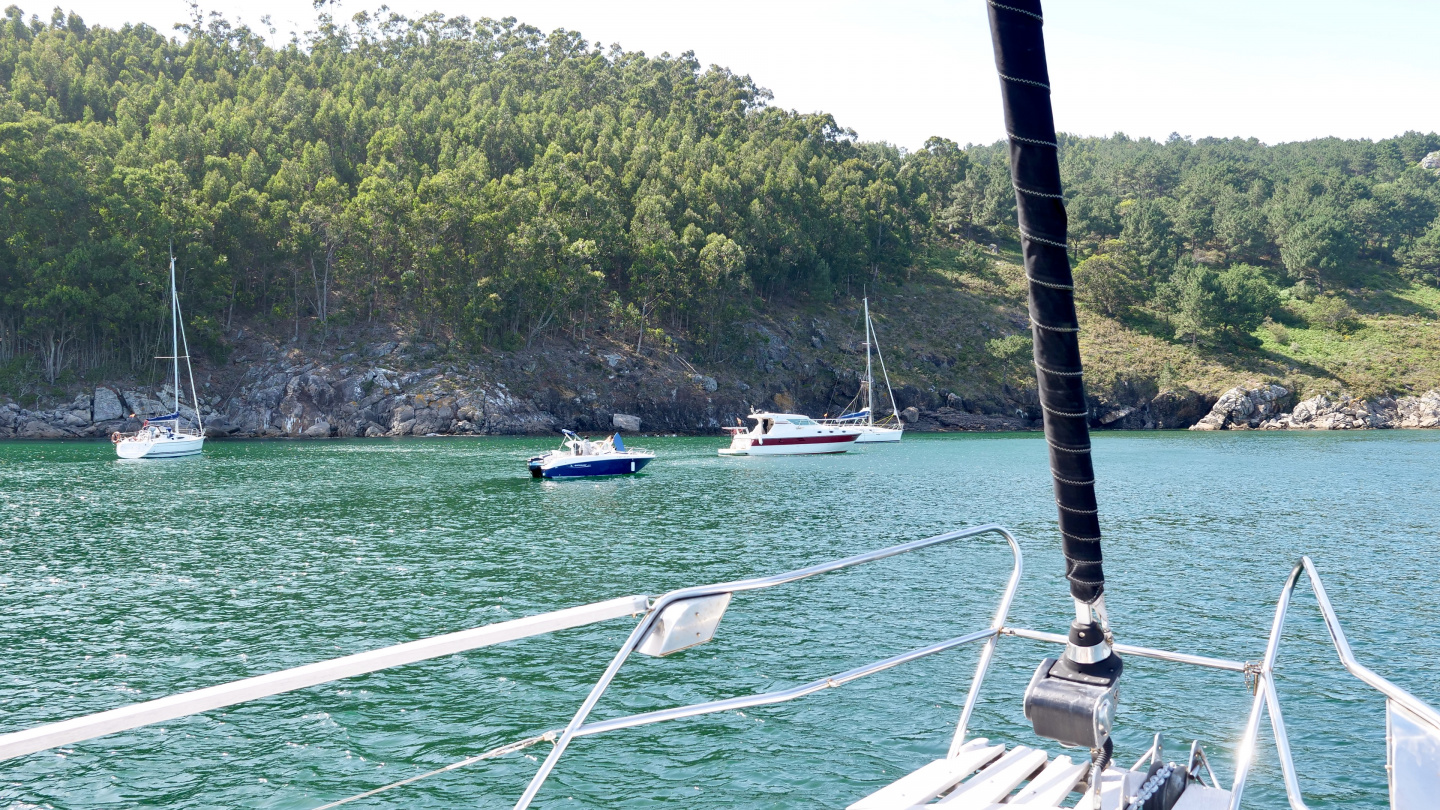It was time for a new ría and so we aimed for the southernmost bay of Rías Baixas called Ría de Vigo. We intentionally skipped a few bays because after Vigo our route will bring us slowly back towards north to Ría de Arousa where Suwena will stay for wintering.
Our Galician friend Rafael recommended that “for sure you must stop at the anchorage in the bay of Ensenada de Barra before arriving in Vigo” and so we did. First, we had a nice 39 mile sail from Portosin to the bay of Vigo during which we enjoyed an amazing Galician scenery. We passed the biggest bay, Ría de Arousa, after which we passed Ría de Pontevedra and the island of Islas Ons in front of it. Also the natural reserve island of Islas Cíes protecting the bay of Vigo have to still wait us for a while.
Sailors have to bear in mind a few rules while sailing close to these natural reserve islands. At first you must apply for a navigation permit that is required for entering the natural reserve. The borders of the natural reserve area are clearly marked in navigation charts. Second one is the daily anchoring permission that is required if you want to stop for enjoying the natural beauty and tranquility of the islands. Andrus had applied for the navigation permit already earlier in the winter and it’s valid for two years. Now we could legally sail past the islands and our expectations about the planned Midsummer Day on the islands was only growing. Now however our destination was the bay of Barra.
In the afternoon when arriving in the bay there were already about 50 boats anchored. After making a few rounds around the anchorage we found a good place for Suwena. Some of the boats were anchored just in front of the beach. Of course why not as Praia de Barra sandy beach seemed to be a nudist beach.

Whenever possible it pays back to ask from local sailors about good anchorages. As per Rafael’s recommendation we put the hook down on the western side of the bay so the hills created a good wind shelter there. Already in northern rías we had noticed that the wind picked up every afternoon and again calmed down in the evening. The wind pattern is so obvious that we just had to find a reason behind it.
This prevailing north-northeast wind is blowing from June until September and is called Nortada (north wind in Portuguese). The wind strength is between 20 and 30 knots and with clockwork precision it starts blowing every afternoon and continues until 7pm in the evening. This phenomenon is due to the clockwise rotating center of semi-permanent high pressure system which is located on top of the Azores during the summer months. At the same time a counter-clockwise rotating thermal low pressure which is located over the Iberian Peninsula meets with the clockwise rotating Azores anticyclone’s edge on the coast of Galicia and Portugal. Sailors have even given a name to this regular wind: Portuguese trade wind. After all the passage planning is rather easy as the wind is predictable. Anyhow when looking at anchorages it is not so simple. The wind is twisting in rías between the hills and is blowing from surprising directions. Therefore, the local knowledge about where in the bay to lower the anchor is invaluable. And so we found a good spot for Suwena in the bay of Barra. I only teased Andrus that “Don’t you think that we’re too far from the nudist beach as both the Swedish and the Dutch yachts had lowered their anchors almost to the beach :-)”
At daytime there were quite a few day trippers. Local sailors were passing between the boats and beach with dinghies. Also, the beach was completely packed with people. In the evening most of the boats weighed the anchors for returning to the home harbor. However, about twenty boats stayed with us for the night at anchor. In total it was an amazing place to spend the summer weekend.

Next morning the sunshine and birds singing brought new day sailors to the bay at the same time when we weighed the Suwena’s anchor and turned her bow towards Vigo.

